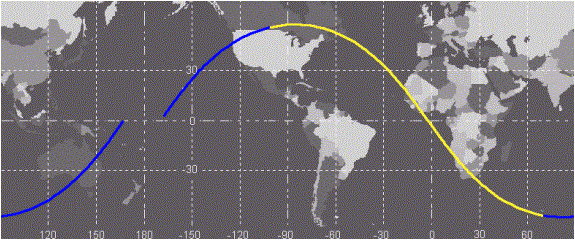| Home >> | Advanced Search >> |
 |
|
Space Station Orbit TutorialCynthia A. Evans and Julie A. Robinson, Earth Sciences and Image Analysis, NASA Johnson Space CenterFor the purposes of planning Earth observing photography or remote sensing, there are four important points about the orbits of the ISS. Particulars of the orbits depend on the exact altitude of the station, and the exact altitude depends on the frequency that the station is reboosted to a higher orbit. FACT 1: The station travels from west to east on an orbital inclination of 51.6 degrees. Each orbit takes 90-93 minutes, depending on the exact altitude of the ISS. During that time, part of the Earth is viewed under darkness and part under daylight. The ISS orbital altitude drops gradually over time due to the Earth's gravitational pull and atmospheric drag. Periodic reboosts adjust the ISS orbit. As the ISS orbital altitude decays, the orbit tracks on Earth change slightly.
|
Server: 2 |
This service is provided by the International Space Station program. |
 Figure 1. One complete orbit with daylight illumination shown in yellow and darkness in blue. The orbit track shifts
westwared relative to the Earth’s surface by the amount the Earth rotates during the revolution of the space craft. Thus,
the orbit below, begins at the equator over the Pacific Ocean, and ends again at the equator but to the west of where it
began. An orbit is numbered from where it crosses the equator on the ascendant part of the pass.
Figure 1. One complete orbit with daylight illumination shown in yellow and darkness in blue. The orbit track shifts
westwared relative to the Earth’s surface by the amount the Earth rotates during the revolution of the space craft. Thus,
the orbit below, begins at the equator over the Pacific Ocean, and ends again at the equator but to the west of where it
began. An orbit is numbered from where it crosses the equator on the ascendant part of the pass.

